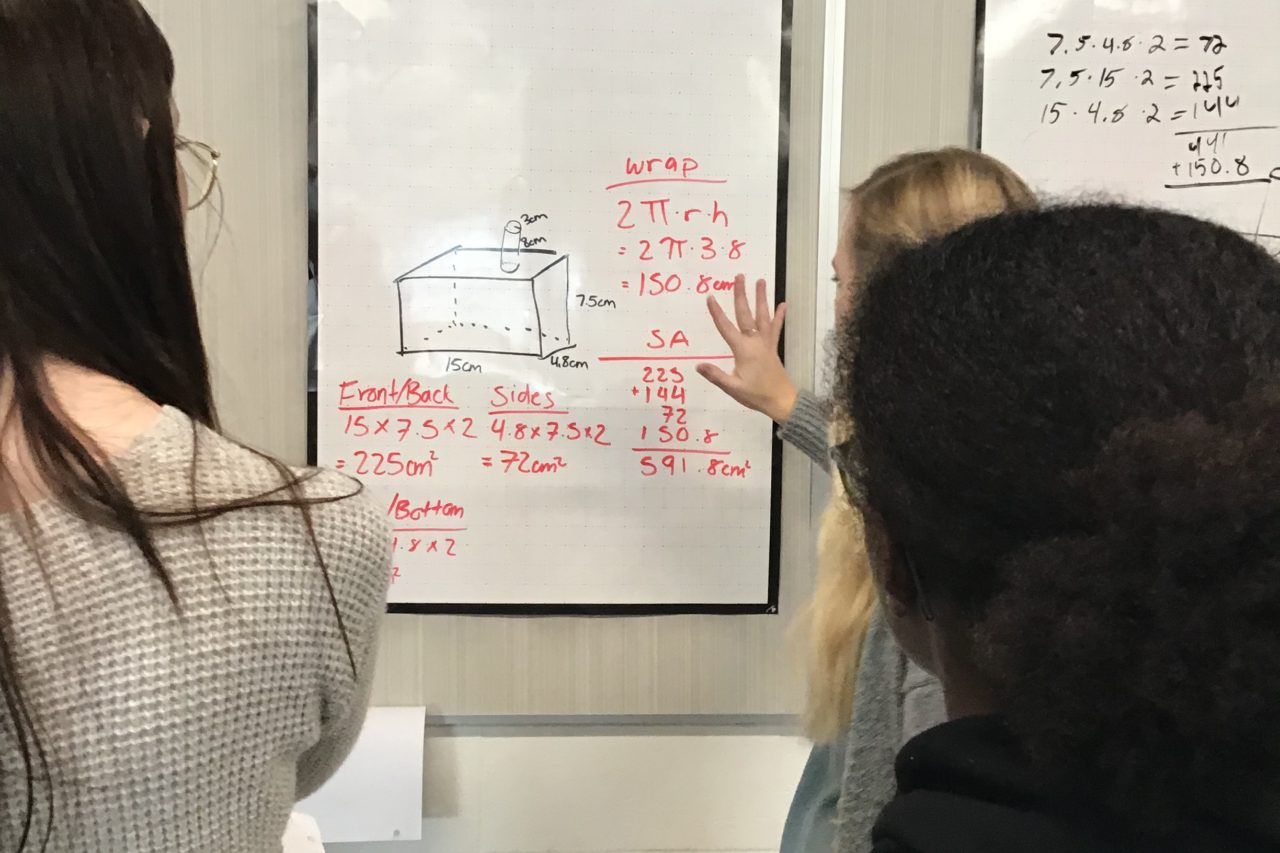A classroom community is a balancing act between teacher voice and student voice. As educators, we each have our own strongly held beliefs about how our classrooms should run, what instructional tools we want to use, what our educational philosophy is. Sometimes, though, the instructional strategies we want to use in our classroom communities are new and challenging and outside of the comfort zone of our students. How do we bridge this difference in a way that sets our students up for success, as well as remain true to our educational goals?
During the month of December, I had the pleasure of joining Melissa Guenther and her Grade 12 Pre-Calculus Class at Niverville High School. Melissa is a dynamic and creative teacher, and is passionate about building rich mathematical experiences into her classroom community. One of the ways she is doing this is through the use of Vertical Non-Permanent Surfaces to challenge her students to work in visibly random groups, collaboratively solving problems and discussing their ideas. As I visited her class, I could tell that some students found this outside of their comfort zone, and perhaps even challenged their ideas about what mathematics class should be about, however, they engaged in their learning and shared their thinking. After working through several problems, shared verbally by Melissa at various points, but also through the use of her digital whiteboard at the front of the room, students then also had the opportunity to engage in more ‘traditional’ mathematics practice using the textbook and working individually. I could tell that students were comfortable in this setting as Melissa touched base with them, helping them connect their work on the whiteboards to their work individually in their notebooks. Students moved back and forth through both of these environments throughout the class period. Students consolidated their learning by talking with Melissa, and their peers and referencing the problems they had done on the whiteboards.
When I asked Melissa about this hybrid approach, she was candid in her thoughts. While she felt very strongly about using rich tasks, VNPS and other collaborative approaches, her students also needed the familiar routine of working in more traditional ways. As a teacher, this is the balance we must seek — using what we know are best practices but also being responsive to the students we have in front of us, all the while continually challenging them to grow.
As we continue our respective journeys as educators, this is an approach we must keep in mind: the constant infusing of our new learnings, while honouring the voices and comfort of our students. We must always be mindful of what the students in our classrooms both want AND need at this moment in their learning. Classroom education is a fusion cuisine, and it takes skillful practice to do well.
